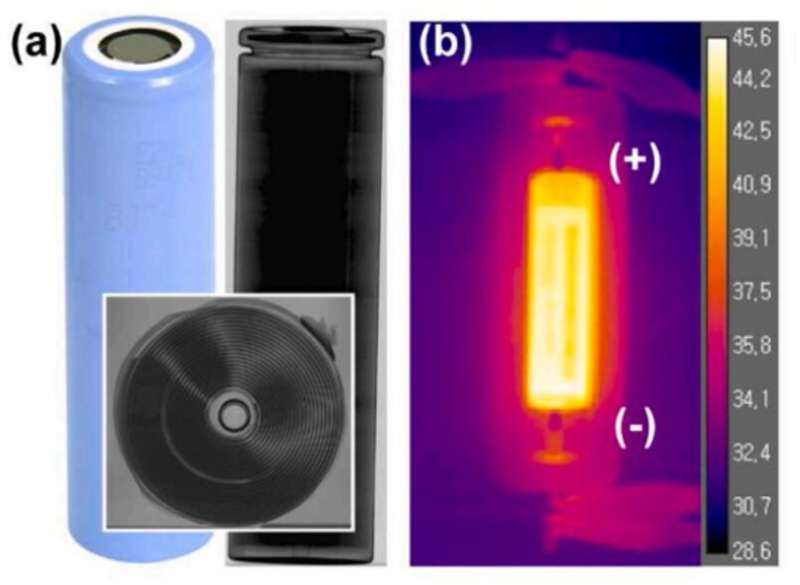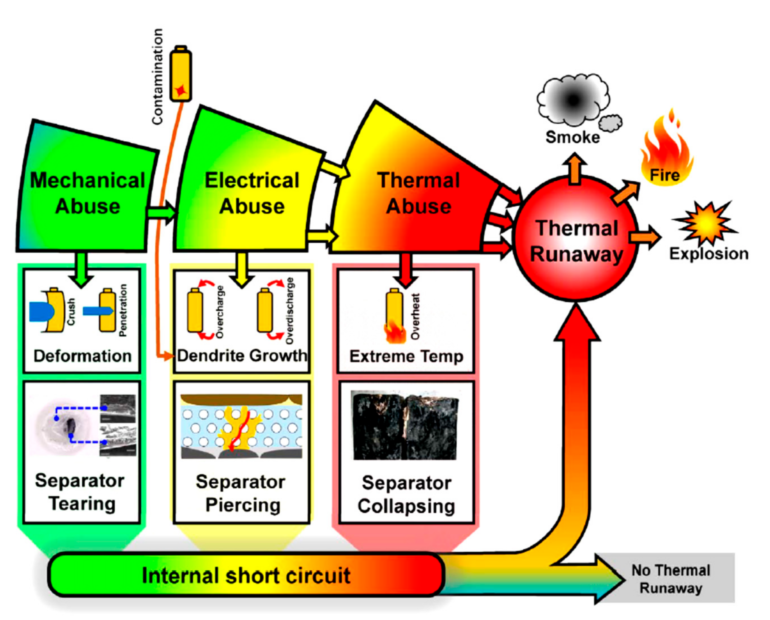A study on statistical and computational analysis for state-of-health and heat generation behavior of long-term cycled NCA/graphite cylindrical lithium-ion cells for energy storage applications jointly led by Dr. Yoon-Cheol Ha at Next-Generation Battery Research Center of Korea Electrotechnology Research Institute (KERI, President Sung-ho Myung) and Dr. Yong Min Lee at the Department of Energy Science and Engineering of Daegu Gyeongbuk Institute of Science and Technology (DGIST) was published in the Journal of Power Sources. Tai-Jong Jung, a Ph.D. candidate at the Department of Electro-Functionality Materials Engineering of University of Science and Technology (UST) and Hyobin Lee, a Ph.D. candidate at DGIST contributed as first authors of the article.
Lithium-ion batteries are used in various industrial sectors and devices representing the fourth industrial revolution including smart phone, electric vehicle (EV), energy storage system (ESS), etc. However, fire accidents of batteries for passenger EVs and electric buses have become a worldwide issue, and there also has been massive fire accidents related to ESS, both of which are gaining great attention recently. Likewise, there is a growing risk of fire and explosion in line with the increased use of lithium-ion cells and so experts are making efforts to develop technologies to prevent the accident caused by the failure of thermal management of lithium-ion batteries.
The thermal management of lithium-ion cells is considered as a key method for its safe use, as the rapid degradation of cells takes place when the temperature is too high or too low. However, the current “thermal management system” is commonly designed based on the initial properties of new batteries and does not reflect the degraded properties caused by long-term cycling.
The research team analyzed the effect of the long-term usage on the cycle life and heat generation behaviors simultaneously and developed a method to predict the potential risk of fire. Through scientific approaches, the study found that even normal cells with no manufacturing defects, impact, or other abuse factors may cause an accident when they are used for long time without systematic thermal management.

X-ray image and thermography of the 2.85 Ah 18650 cyclindrical cell used in this study. © Korea Electrotechnology Research Institute
This study was conducted on cylindrical cells (2.85Ah) that are one of the most commonly produced lithium secondary batteries. The research team analyzed approximately 1.7 million time-series data obtained from over 1,000 tests in various C-rate conditions. For the first time in the world, they provided a statistical analysis for the effect of the C-rate on the cycle life and heat generation of lithium-ion cells, as previous studies have provided simply the change of charge and discharge capacities with cycling.
The research team went one step further to develop a Python program for data visualization and its statistical analysis, and analyzed the long-term performance of batteries. They also laid the foundation for numerical simulation by linking with commercial softwares. This statistical and computational analysis is expected to greatly contribute to improving the safety of EV and ESS in which hundreds or thousands of cells are assembled in a closed environment for energy storage.
Dr. Yoon-Cheol Ha of KERI said, “People may know from experience that a smart phone becomes hotter as they use it longer. This study is particularly meaningful in that we applied a scientific approach by conducting a statistical and computational analysis to identify the cause of more heat generation from those long-term cycled lithium-ion cells. We will continue to carry out our research activities to develop technologies for the stable operation of various types of batteries including large-format pouch cells and prismatic cells.”
The study was published in the May issue of the Journal of Power Sources.
More information:
Tai-Jong Jung et al, Statistical and computational analysis for state-of-health and heat generation behavior of long-term cycled LiNi0.8Co0.15Al0.05O2/Graphite cylindrical lithium-ion cells for energy storage applications, Journal of Power Sources (2022). DOI: 10.1016/j.jpowsour.2022.231240
Provided by
National Research Council of Science & Technology
Citation:
Method to predict the fire risk of lithium-ion cells based on thermal management (2022, May 19)



